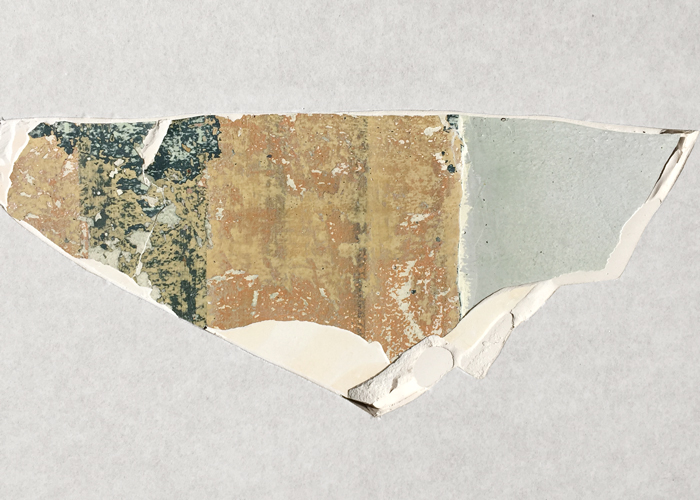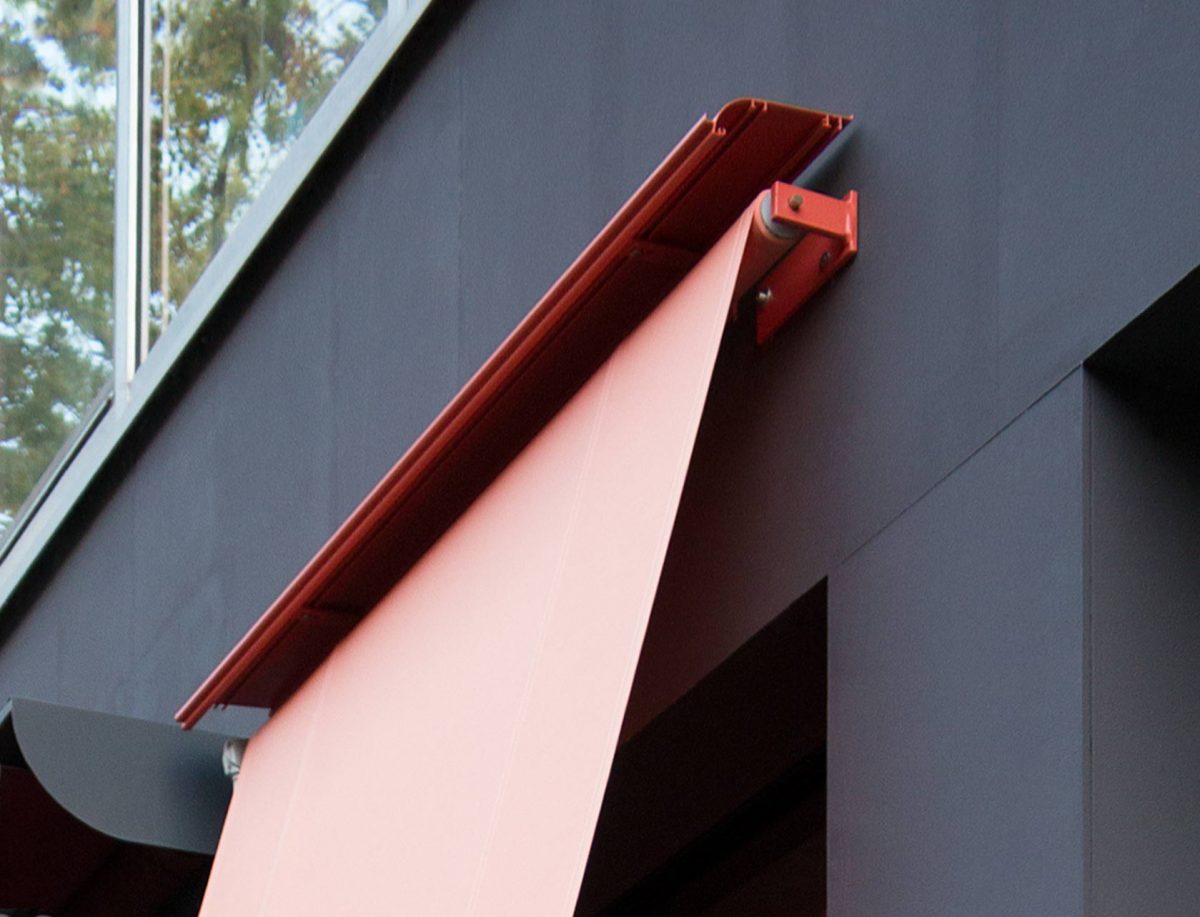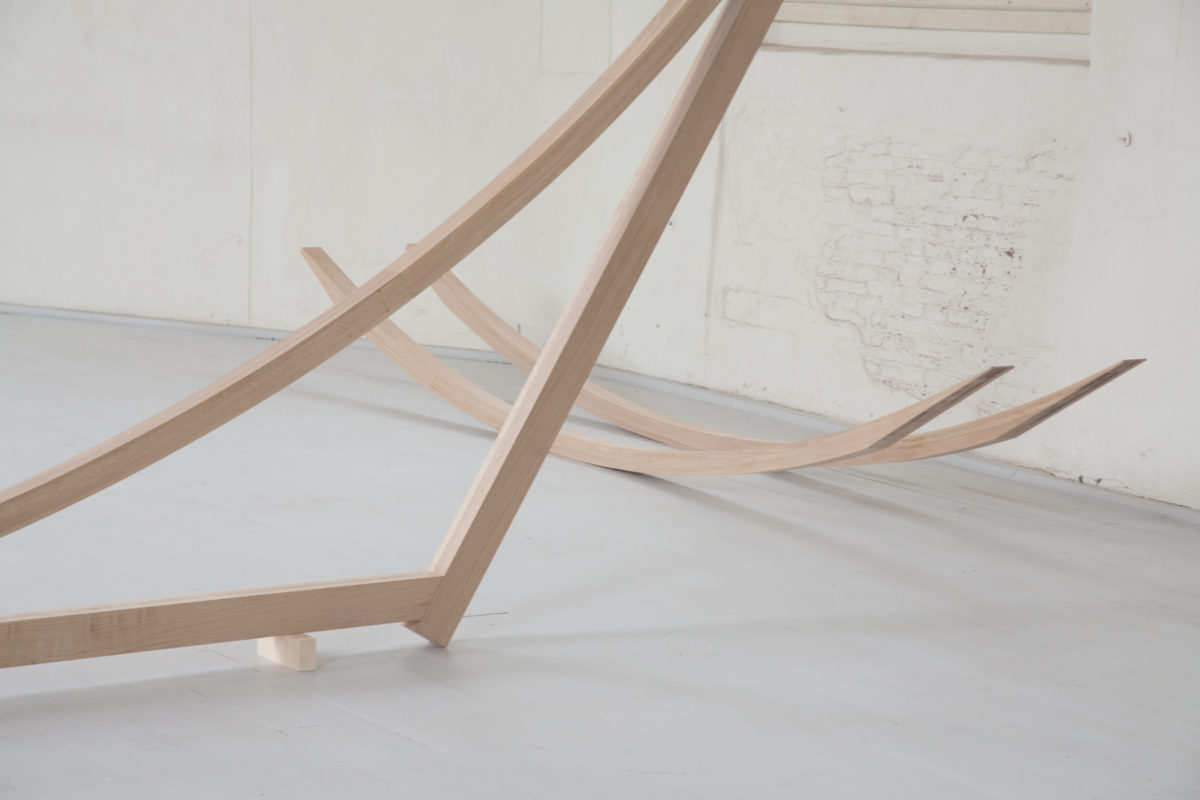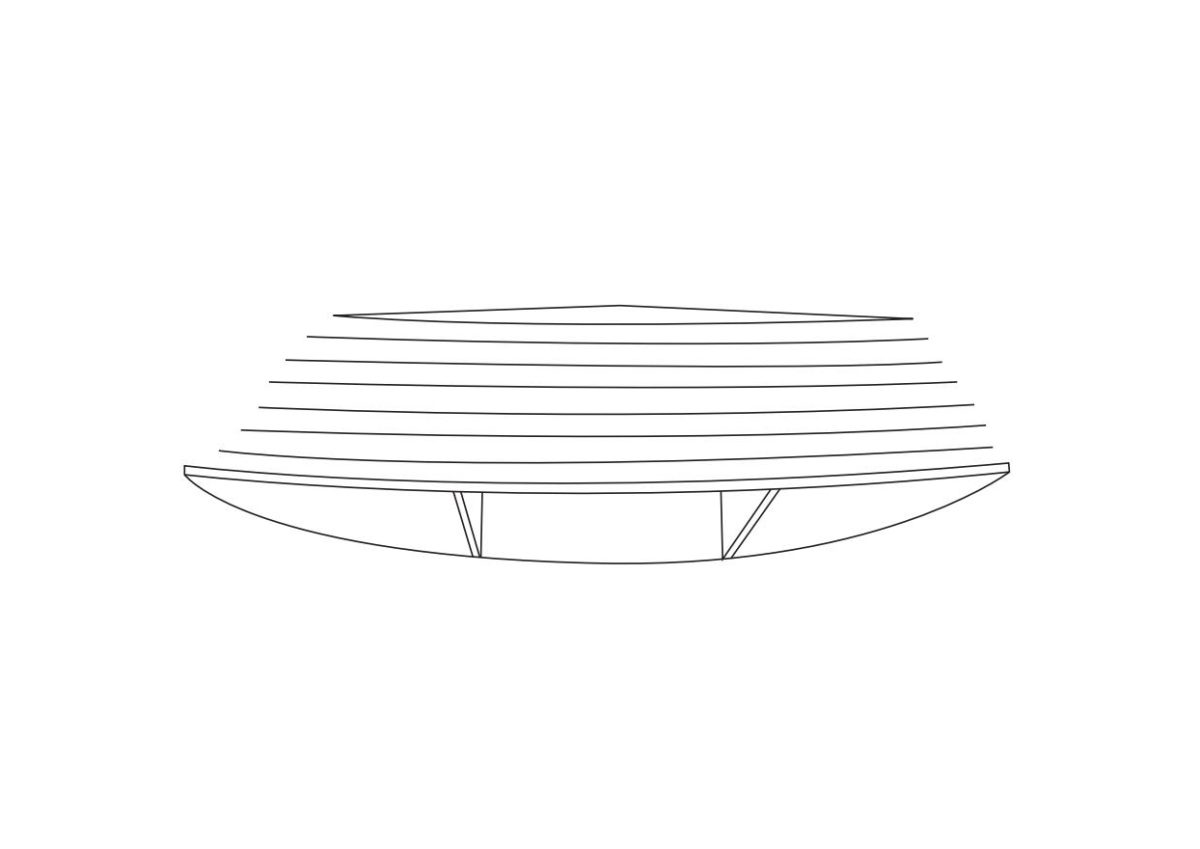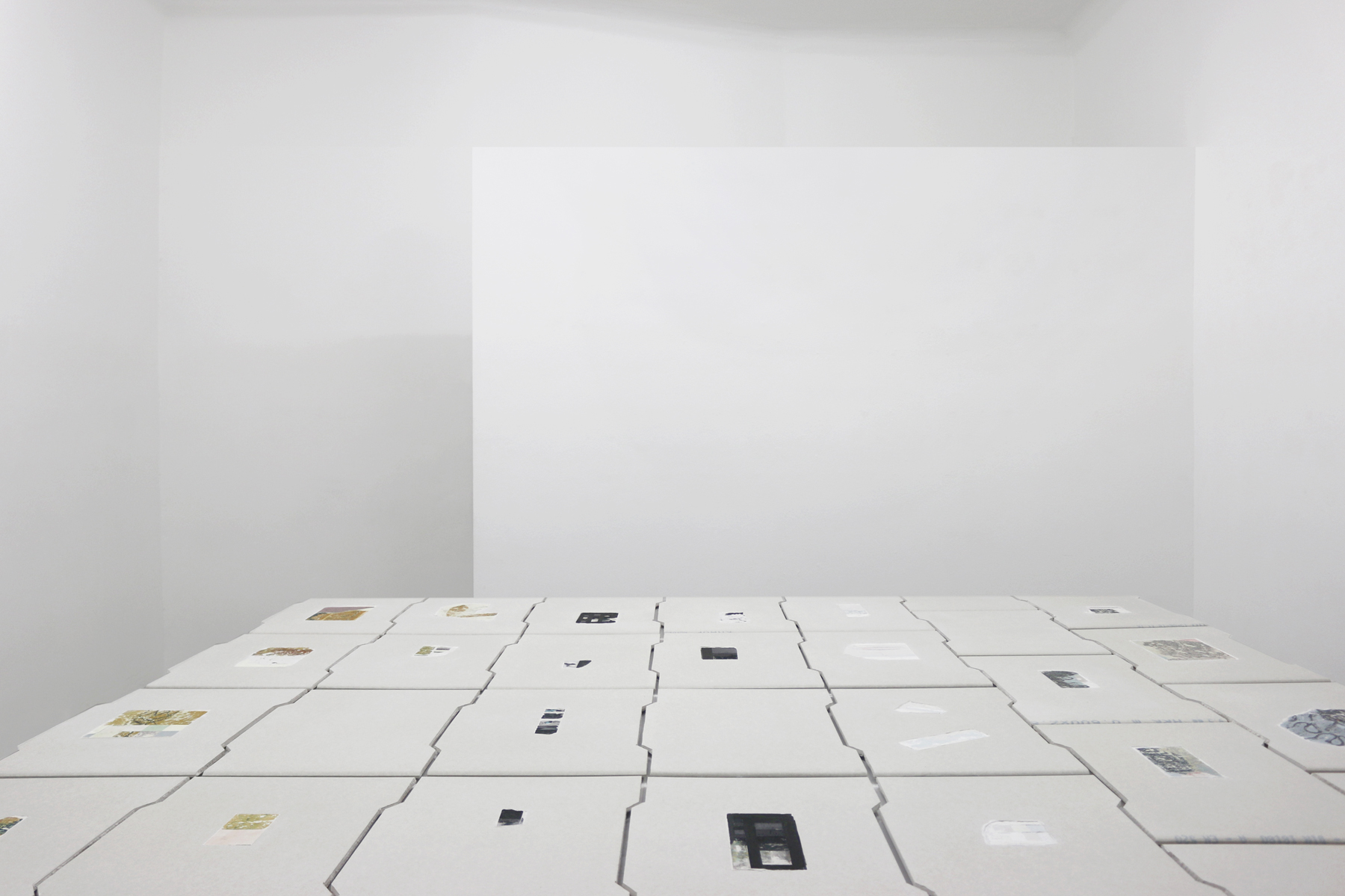
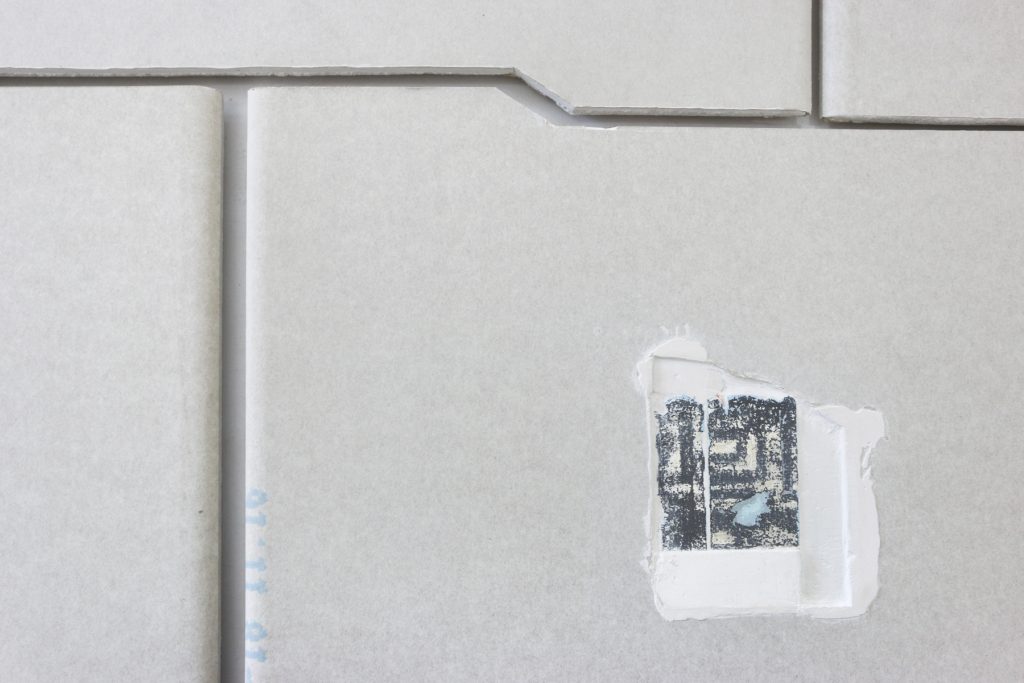
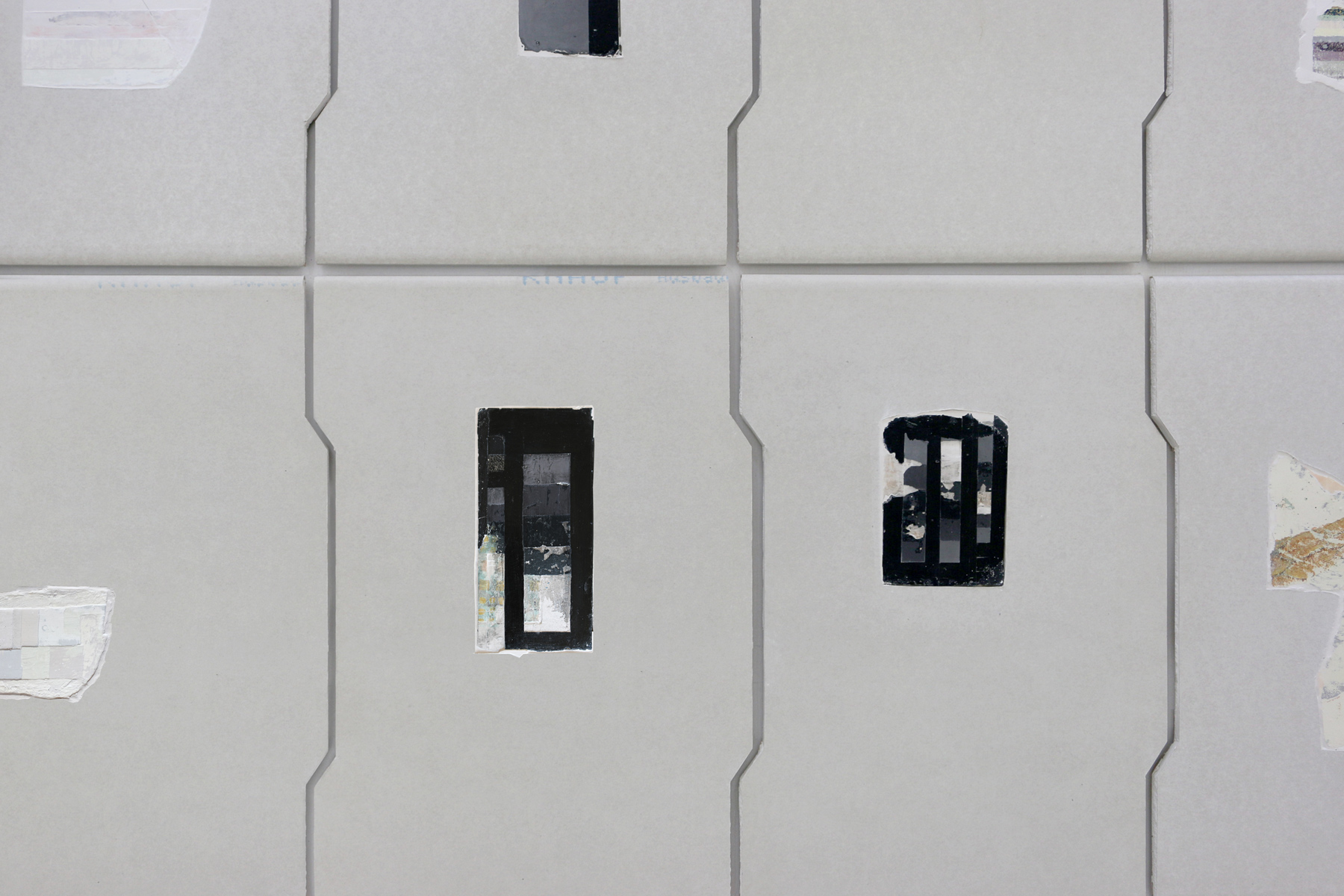
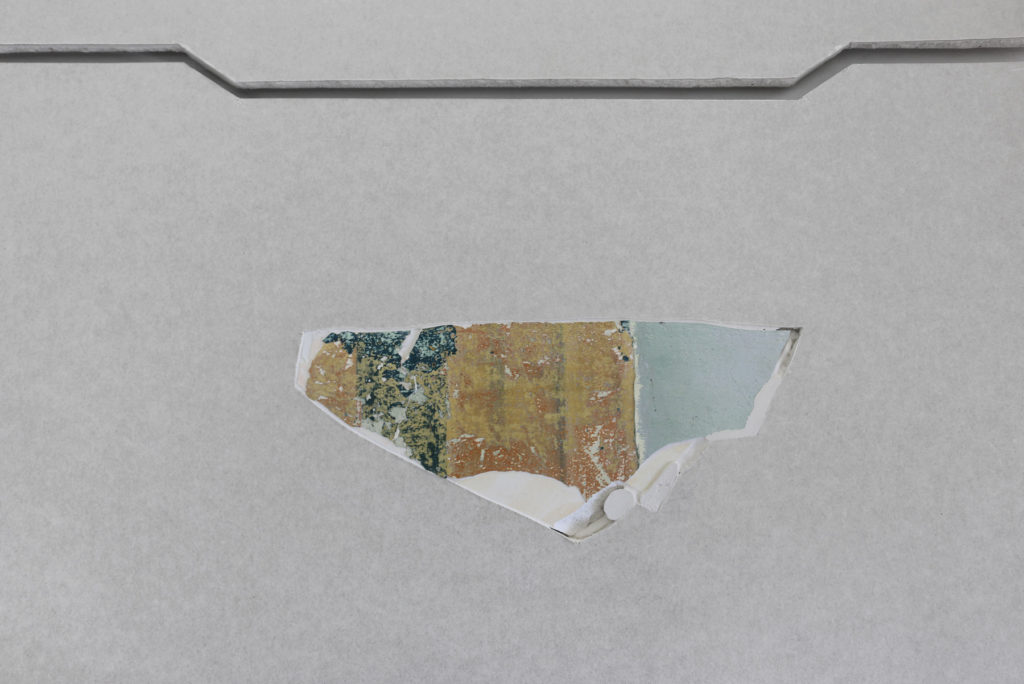
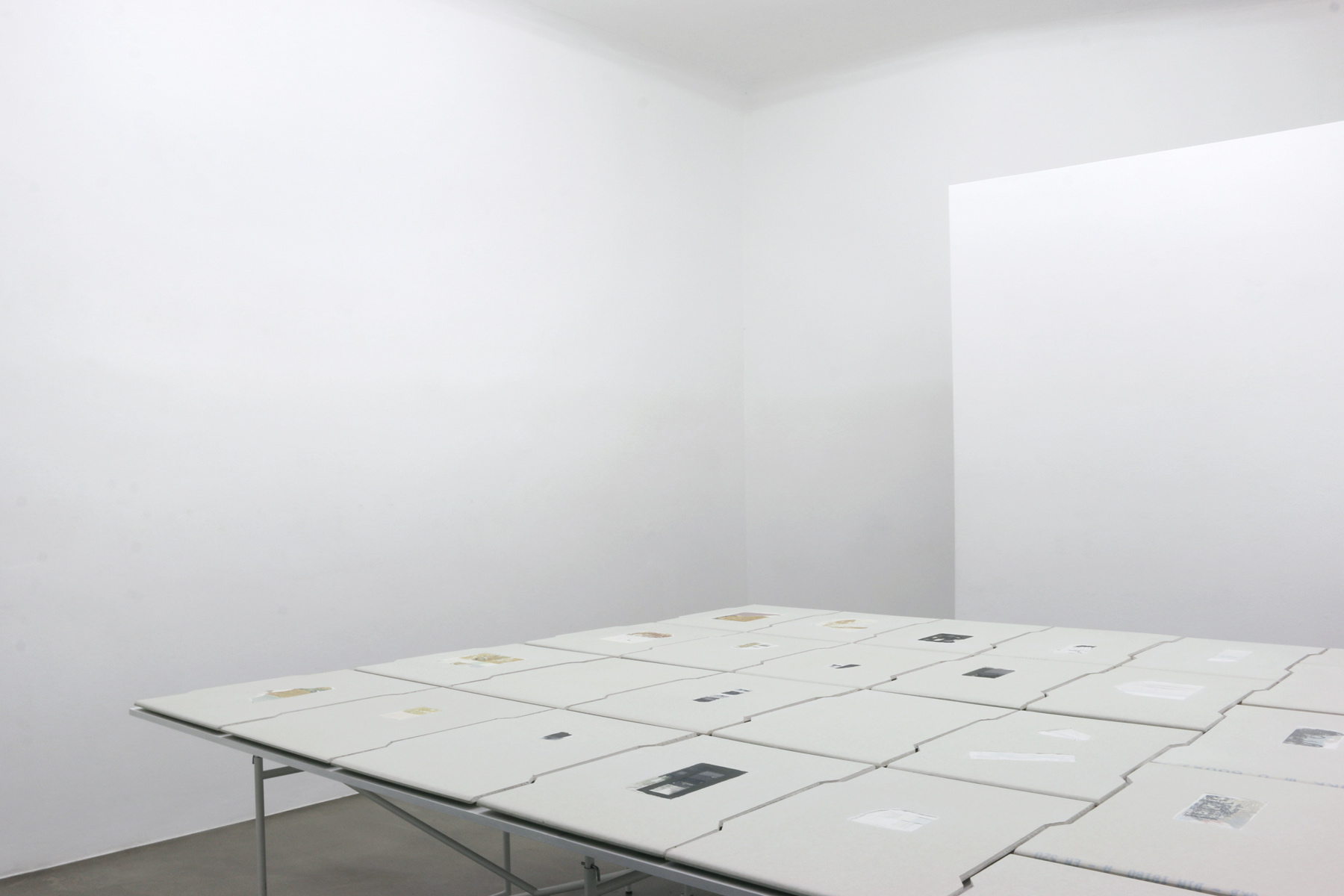
In the restoration of buildings, colour sequencing or ‘farbtreppe’ are often visible as small sections on a surface where the painted layers have been gradually scraped back to reveal the strata underneath. These markings are most commonly found in historical interiors, where it is of interest to point back to the past, adding commemorative and age value to a space.
On plaster surfaces, restoration notations are reconstructed, following the same process of layering paint and then removing it, as a fast-forward version of historical evidence. They are fictional variations, loosely based on a specific space – at times revealing pictorial qualities, possibly decorative, often unlikely.
At Manière Noire, the constructed sequences are inserted into industrial plaster panels cut to form systems of interlocking patterns. The collection references a whole, but the panels are not bound to a specific location. Displayed on work tables, they are presented as parts extracted, acquirable and ready to be inserted elsewhere, offering an alternative ‘use value’. In pointing towards methods of construction, the historical representations are not only connected to visualising a past, but also with improvement and revival. Added lustre removed suggests a way to consider history not as something static concerning the past, but as being formed and constantly reworked in the present.
http://www.manierenoire.net/timeline/added-lustre-removed/
